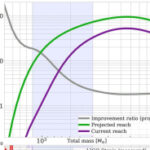LOS ANGELES — Skyrocketing housing values and a shortage of homes on the market gave homeowners the upper hand for years when it came time to sell. That’s no longer a given.
Across the country, it’s getting tougher for sellers to drive a hard bargain. A dearth of home shoppers who can afford to buy and uncertainty about the outlook for the economy, jobs and mortgage rates is putting pressure on sellers to give ground at the negotiating table.
In some markets, mainly in the South and West, homeowners who are eager to sell are more likely to give buyers a better deal. This could include a lower price, up-front money to nudge down the buyer’s mortgage rate, and funds for closing costs and any repairs or improvements that may pop up after the home inspection.
The reasons: Would-be buyers balk at what they view as unreasonable asking prices, while at the same time new construction is giving buyers more options and putting pressure on sellers to make their homes more appealing.
As a result, while the national median home listing price rose slightly in July, some metro areas saw a decline, signaling a reversal in the power dynamic between buyers and sellers. It’s rare to see the type of eye-popping bidding wars that exploded home values by roughly 50% nationally earlier this decade. Low-ball offers are more common.
Despite this hopeful trend, the housing market remains mired in a slump. Sales of previously occupied U.S. homes are running about 1.3% below where they were through the first seven months of last year, when they sank to their lowest level in nearly 30 years.
The national median home listing price rose slightly in July from a year earlier to $439,450, according to Realtor.com. The real estate listing company found the most a homebuyer who earns the median U.S. household income can afford to spend on a home is $298,000. The analysis assumes a 20% down payment and a 30-year mortgage at a fixed rate of 6.74%. By those criteria, 7 out of 10 home shoppers are priced out of the market.
The housing market has been in a rut since 2022, when mortgage rates began climbing from historic lows. The number of homes available for sale sank while prices kept rising.
Nationally, more homes are going on sale and remaining unsold longer because buyers have been unwilling or unable to make a deal. Active listings — a tally that encompasses all homes on the market except those pending a finalized sale — increased in July for the 21st month in a row, climbing nearly 25% from a year earlier, according to Realtor.com.
The inventory of homes for sale across the U.S. has increased gradually as the ma





